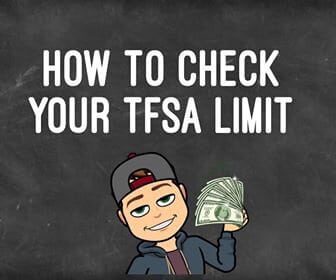
Short selling is one of the most common phrases thrown around in investment jargon. If you are new to the game, it is understandable if the process is a bit unclear. Short selling is basically a type of contrarian trade in which you believe an overvalued stock will drop in price. But if a stock loses value, why do people short trade and how does it work?
People short trade because they see an imminent price drop in overvalued stocks. They profit from it by borrowing shares of the overbought stock. Traders sell these shares high and rebuy them at a lower future price point. The profit is the difference in the sale and purchase prices of the stock.
If this isn’t confusing enough, throw in the wrinkle that you have to open a margin account with your brokerage. In a margin account, you will be charged interest as you are borrowing funds from the brokerage. To help you out, keep reading for a breakdown of why people short stocks and how they do it!
Why Do People Short Stocks?

People short stocks because they see an opportunity to profit from a stock that is currently overvalued.
Essentially, short sellers aren’t buying the hype, and they are willing to put their money where their mouth is.
Unlike leaving your money in cash, the stock market is highly volatile. This naturally results in price fluctuations on a daily, monthly, and yearly basis. Stock prices will either go up or down, and short sellers bank on the latter happening to make a profit.
How does Shorting a Stock Work?
The concept of short selling is extremely confusing to the beginning investor.
After all, if a stock price is going down, how is it possible that anyone makes money?
Well, with a short trade, you aren’t actually buying any shares of the stock. You are actually borrowing shares of the stock and selling them immediately. Then, with the promise to give the borrowed shares back to the lender, you keep the difference as a profit.
While this makes the process of a short trade a bit more complex than a standard buy low, sell high transaction, it is really not too difficult when broken down step by step:
- The short seller identifies a stock he or she believes to be overpriced and is due for an imminent price reduction
- The short seller borrows a number of shares from a lender (purchased using money in a margin account) and immediately sells them at the elevated price, pocketing the cash from the sale
- When the price drops to an acceptable floor, the short seller will then repurchase the borrowed quantity of shares at the lower price
- The short seller now has the original quantity of borrowed shares and a surplus quantity of cash. He or she returns the borrowed shares to the lender and keeps the surplus cash as profit–the result of a successful short trade
In most cases, short selling works best with a large number of shares. While you can perform a short trade with any volume, shorting in large quantities introduces a huge supply of shares into the market. This produces price pressure on the stock that can propel the share price downward. Precisely what short-sellers want to happen.
Who Lends Stocks to Short Sellers?

The short seller can usually borrow shares from their broker (Robinhood, Fidelity, Wealthsimple, TIAA, etc.). This will come from a supply of shares that the brokerage holds for itself. Alternatively, they can also be shares that the brokerage has borrowed from other clients for the purpose of being re-lent. If you have a Robinhood account, you’re probably familiar with the marketing messages asking if you would like to lend your shares. This is for the purpose of providing them to short-sellers!
The terms for borrowing shares for the purpose of shorting are usually pretty flexible. Some brokerages have set dates for when the shares must be returned, but as long as you are paying the margin interest (you didn’t think you could borrow shares for free, did you?), then they will generally let you hold the shares for as long as you like.
How this works is that your brokerage will extend you the cash to purchase the “borrowed” shares, charging you an interest rate (typically between 8-13%) for the right to use the margin account.
The Federal Reserve Board requires you to have this type of “margin” account with your brokerage because shorting stocks essentially involves selling an instrument that is not technically yours.
What Are The Risks and Benefits of Shorting a Stock?
As you’ve probably guessed by now, shorting a stock is a bit riskier than simply buying and holding stocks. And that is saying something, as most ultra-conservative people think traditional stock investing is too risky for their taste.
To start with, short selling has the downside of the interest you have to pay on your margin account. Therefore, the longer you have to wait for the share price to drop, the more you will end up paying.
Then there is the chance that you read the market wrong and the price never drops. The price of a stock theoretically has no limit. Therefore, if you try to short a stock at the wrong time, you may have to buy your borrowed shares back many times over what you originally paid for them, resulting in catastrophic losses.
Finally, there is also the concept that your earnings potential is capped with a short trade. If you borrow 10 shares of Stock X and sell them at $100 per share and the price goes to zero, you will make $1,000 (minus any margin interest) from the trade.
The Upside vs. Downside of Short-Selling

On the other hand, if you bought 10 shares of Stock X at $100 per share and the price goes to $1,000 per share before you sell them, you will have made $9,000 from the transaction. As such, the upside to just sticking with a buy low, sell high philosophy can be much higher.
However, short selling has been a major part of the financial markets for centuries because there is big potential if executed correctly.
The thought process is that while most indexes generally creep upward over time, individual stocks are much more volatile and can become extremely overvalued at certain points. When the financial statements and earnings of an individual stock don’t align with its current price point, the opportunity is ripe to short-sell, as the bubble is bound to burst.
In addition, the price of stocks generally falls much faster than they rise. Stocks can erase months/years of gains in a matter of days when a bear market hits. We witnessed this firsthand at the onset of the current bear market. So if you time a short trade correctly, you can profit big-time in a matter of days and not have to pay much at all in the way of margin interest.
The Bottom Line: How and Why People Short Stocks
People short stocks by borrowing shares of overpriced stocks. Then, they sell them at a high price and then rebuy them at a lower value in the future. They can keep the excess revenue generated in the process.
While a bit riskier than traditional buy-and-hold investing, shorting is a great way for savvy investors to quickly take advantage of an overbought stock’s imminent crash back to earth.
Thanks for reading! We hope you learned a thing or two about short-selling!
Geek, out.






